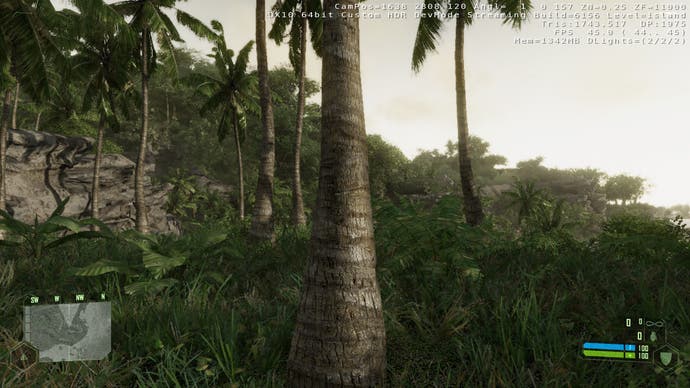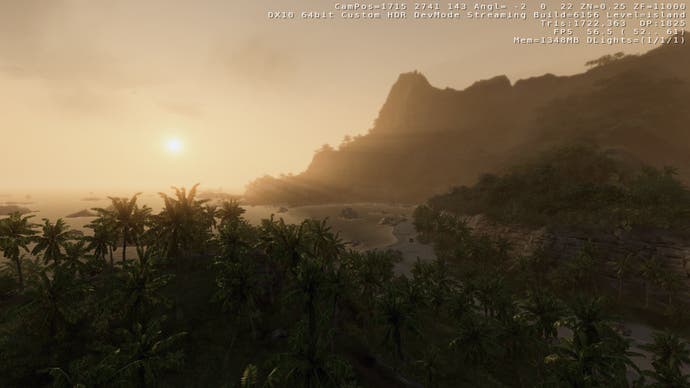Can Consoles Run Crysis?
Digital Foundry lays out the ultimate test for CryEngine 3.
It's just over two years since CryTek released its astonishing first-person shooter Crysis, and despite enormous technological leaps in the PC space, it remains the single most important game available for testing graphical performance. At maximum settings, even the most powerful available combination of CPU and GPU still cannot run this game at 1080p with a sustained, v-synced, 60 frames per second.
That being the case, the tantalising glimpses we've had of Crysis running on console during CryTek's recent technology demos are all the more remarkable. The firm's motto, "maximum game", suggests a zero-compromise approach to its releases, which doesn't quite seem in step with the accepted wisdom that something has to give when you convert state-of-the-art PC games into PlayStation 3 and Xbox 360 releases. So the question is, based on what has been revealed to date, can consoles run Crysis? Looking ahead to 2010, what can we expect from the sequel, which is also CryTek's first cross-platform project?
First of all, it's only fair to point out that the actual form Crysis 2 will take remains a complete unknown - CryTek is playing its cards very close to its chest. However, we do know that it is based around the developer's new multi-platform middleware, CryEngine 3, and in its quest to sell the engine to other developers the firm has released plenty of source material that gives us some idea of the properties of Crysis 2's underlying tech.
CryEngine 3 looks like a remarkable piece of kit, seemingly combining all the elements of the Crysis engine and then some, alongside tools that allow developers to sculpt levels and gameplay within a single, unified environment that provides "what you see is what you play" results on all three platforms as the game is being made. It's within this environment that we've seen our first tantalising glimpses of Crysis assets running on both PlayStation 3 and Xbox 360.
It's undoubtedly Crysis, but with a visual look quite unlike any of the default settings on PC. Elements of the engine have been repurposed. They've been scaled back in many places, but it's clearly still Crysis, and obviously running on console in real time. So just what has CryTek done to make the impossible a reality and what's the performance like in its own demos?
Digital Foundry charged accomplished Crysis modder Nebula with an uneviable task: to recreate the console look within the existing PC game. CryTek's engine is so scalable and so flexible that for someone with an intimate knowledge of the game this isn't quite the onerous task you might imagine. CE3 appears to be based significantly on the core Crysis tech, so it's no surprise that we're able to scale back CE2 to give a very close replica of console CE3, even if some of the headline tech (such as the hugely impressive global illumination engine in CE3) can't be copied.
Before we continue, check out some of Nebula's existing mods. It's a series of before-and-after comparisons that pits CryTek's original up against our collaborator's remixed renditions. The tech is so flexible that in the right hands, it is capable of more subtle, realistic lighting and more apparent atmospherics. Despite the increase in overall image quality, the mods run with no performance penalty over the unmodified game, as you can see in the debug readouts in the top-right of each screen.







